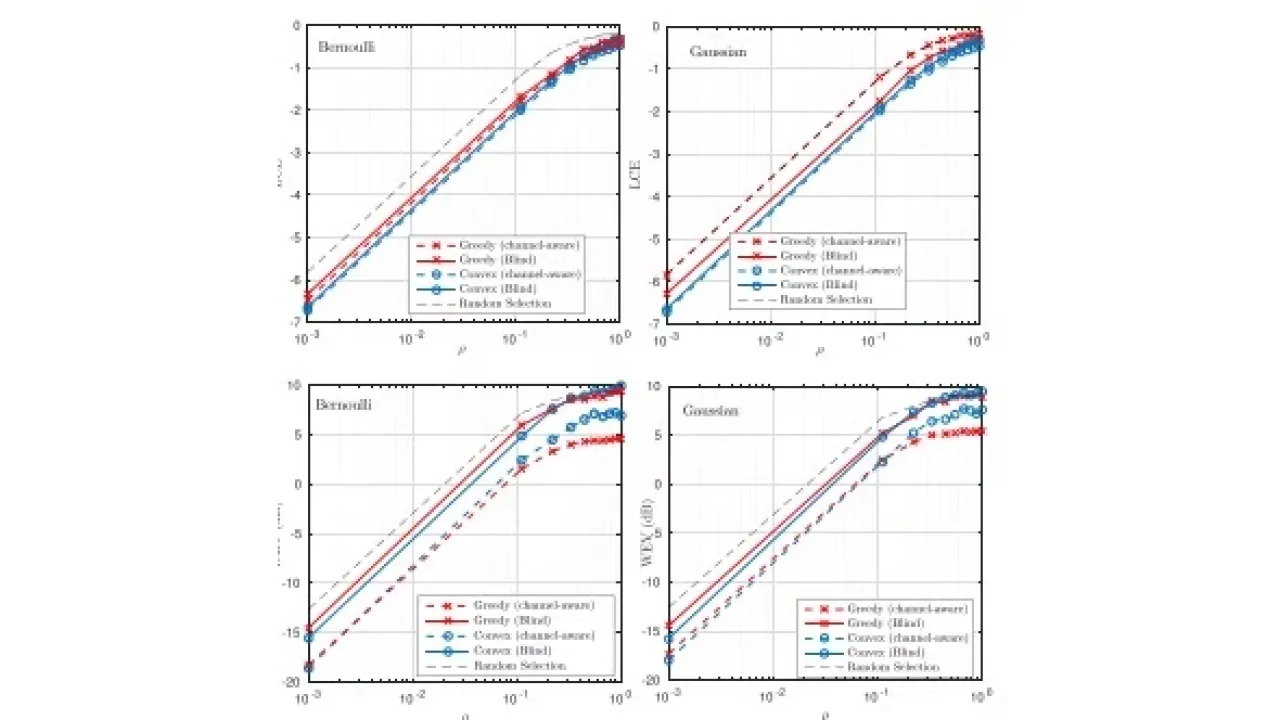
Measurement Selection: A Random Matrix Theory Approach
About
Khalil Elkhalil , Student Member, IEEE, Abla Kammoun, Member, IEEE,
Tareq Y. Al-Naffouri, Member, IEEE, and Mohamed-Slim Alouini , Fellow, IEEE
Abstract
This paper considers the problem of selecting a set of k measurements from n available sensor observations. The selected measurements should minimize a certain error function assessing the error in estimating a certain m dimensional parameter vector. The exhaustive search inspecting each of the (n) possible choices would require very high computational k complexity and as such is not practical for large n and k. Alternative methods with low complexity have recently been investigated but their main drawbacks are that they require perfect knowledge of the measurement matrix and they need to be applied at the pace of change of the measurement matrix. To overcome these issues, we consider the asymptotic regime in which k, n, and m grow large at the same pace. Tools from random matrix theory are then used to approximate in closed-form the most important error measures that are commonly used. The asymptotic approximations are then leveraged to properly select k measurements exhibiting low values for the asymptotic error measures. Two heuristic algorithms are proposed. The first one merely consists in applying the convex optimization artifice to the asymptotic error measure. The second algorithm is a low-complexity greedy algorithm that attempts to look for a sufficiently good solution for the original minimization problem. The greedy algorithm can be applied to both the exact and the asymptotic error measures and can be thus implemented in blind and channel-aware fashions. We present two potential applications where the proposed algorithms can be used, namely, antenna selection for uplink transmissions in large scale multiuser systems and sensor selection for wireless sensor networks. Numerical results are also presented and sustain the efficiency of the proposed blind methods in reaching the performances of channel-aware algorithms.



